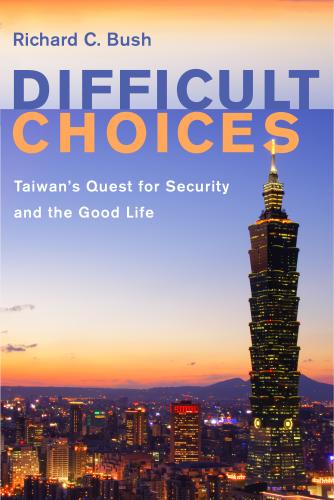This piece is part of the Taiwan-U.S. Quarterly Analysis series, which features in-depth analysis of important issues in Taiwan and the Taiwan-U.S. relationship by leading experts, with the goal of providing a range of perspectives on developments relating to Taiwan.
In December 2003 during his meeting with Chinese Premier Wen Jiabao at the White House, then U.S. President George Bush said that the United States opposed “any unilateral decision by either China or Taiwan to change the status quo.” Nearly two decades later, that message hasn’t changed. At the end of last month, U.S. Secretary of State Antony Blinken is reported to have made it “crystal clear” in his talks with Chinese Minister of Foreign Affairs Wang Yi that the United States opposes any unilateral change to the status quo.
Is this evidence of a consistent, clear American position on the cross-Strait question? Or is it the expression of a weak policy formula, in which status quo simply means no war?
How the Status Quo Has Changed
One way to approach the question might be to simply ask: Was the status quo in the Taiwan Strait in 2003 when then Taiwanese President Chen Shui-bian’s actions were the object of Bush’s comments, the same as the status quo today? The answer is obviously no. But if that is the case, then what is the meaning of “status quo?”
Status quo simply means the existing situation — it is a concept without content. One way of giving it content would be to devise a continuum that ranges from “stable status quo” on one end, where all involved parties accept and support the current situation, to a “conflictual status quo,” where all parties reject the existing situation and are in conflict.
To go one step further with this analogy, I would argue that in the years since 2003, the indicator of status quo has moved in a direction away from the “stable pole” toward the “conflictual pole.”
In 2003, the status quo in the Taiwan Strait was one of mutual frustration. Neither Taiwan nor China could achieve its desired outcome. The United States was stuck in the middle of a continuing manifestation of the Chinese civil war. However, a shared desire to avoid an armed conflict generated implicit and explicit rules of behavior that allowed everyone’s frustration to be managed.
U.S.-China Negotiations on Taiwan Have Become More Dangerous
In the years since 2003, things have changed. Under President Xi Jinping, China has adopted a more assertive external policy, while the United States under the Trump administration adopted an increasingly confrontational approach toward China. Meanwhile, both nations have wielded their respective policies toward Taiwan as an instrument to express opposition toward the other. Taiwan, at the same time, took a less passive position in the triangle, seeking to take advantage of Sino-American differences. A status quo of mutual antagonism has emerged since the rules that made earlier management possible have been undermined.
Recently there has been much attention on Chinese actions in the so-called gray zone — competitive moves that sit in the fuzzy space between war and peace, such as the People’s Liberation Army’s flight incursions over Taiwan’s air defense identification zone. However, allow me to suggest a different zone — the red zone. In American football, the red zone designates the last 20 yards on a 100-yard field before crossing into the end zone. It seems to me that the danger today is that all three actors are pursuing policies that challenge the rules that made possible the previous management of a status quo of mutual frustration. Their actions in the red zone are moving the needle toward a conflictual end of the status quo spectrum.
How to Better Manage the Crisis
Our colleague, the late Alan Romberg, wrote a book entitled “Rein In at the Brink of the Precipice” that warned of the dangers that could result from mismanagement of the cross-Strait question. We should heed his warning today. There is nothing inevitable about war in the Taiwan Strait. The crisis today is caused by the mismanagement of a difficult issue. The present status quo is not something any party should seek to sustain. Indeed, the formulaic repetition of the importance of upholding that status quo is not only dangerous but exposes the poverty of diplomatic efforts in the area.
What can be done? To be sure, given the events of the recent past, it will not be easy to move the needle back in the direction of a less conflictual status quo. The challenges are greater than in the past. Domestic factors — Chinese nationalism, anti-China sentiment in the United States, and growing Taiwan identity — all limit diplomatic flexibility. However, on the most fundamental level, a significant start would be if the Taiwan issue would cease being a surrogate in a Sino-American conflict, as was the case during the 1950s, and be treated by all sides as a complex and dangerous historical legacy that needs careful and skillful diplomatic management.
The Brookings Institution is committed to quality, independence, and impact.
We are supported by a diverse array of funders. In line with our values and policies, each Brookings publication represents the sole views of its author(s).











Commentary
The status quo in the Taiwan Strait is edging toward conflict. Here’s how to stop it.
November 24, 2021